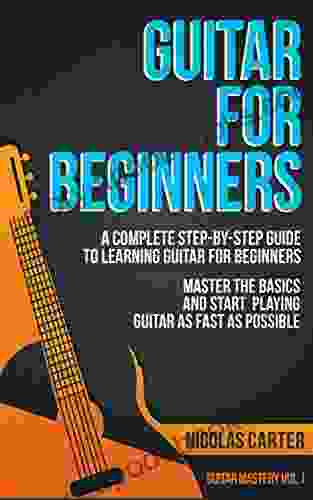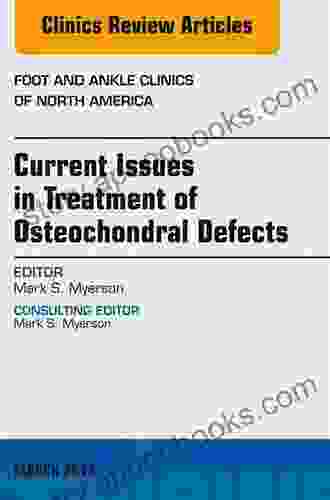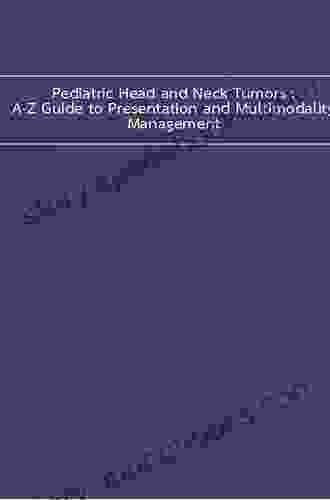Current Issues in the Treatment of Osteochondral Defects: An Issue of Foot and Ankle

4.7 out of 5
| Language | : | English |
| File size | : | 2397 KB |
| Text-to-Speech | : | Enabled |
| Screen Reader | : | Supported |
| Enhanced typesetting | : | Enabled |
| Print length | : | 183 pages |
This book provides a comprehensive overview of the latest advances in the diagnosis and treatment of osteochondral defects, with a particular focus on the foot and ankle. It covers a wide range of topics, including the pathophysiology of osteochondral defects, imaging techniques, surgical and non-surgical treatment options, and rehabilitation protocols. The book is written by a team of leading experts in the field, and it is essential reading for anyone involved in the care of patients with osteochondral defects.
Table of Contents
- Pathophysiology of Osteochondral Defects
- Imaging Techniques
- Surgical Treatment Options
- Non-Surgical Treatment Options
- Rehabilitation Protocols
Pathophysiology of Osteochondral Defects
Osteochondral defects are areas of damage to the articular cartilage and underlying bone. They can be caused by a variety of factors, including trauma, overuse, and genetic disFree Downloads. The pathophysiology of osteochondral defects is complex, and it involves a number of different factors, including the mechanical loading of the joint, the cellular response to injury, and the host immune response.
Imaging Techniques
A variety of imaging techniques can be used to diagnose osteochondral defects. These include plain radiographs, computed tomography (CT) scans, and magnetic resonance imaging (MRI). Plain radiographs can be used to detect large osteochondral defects, but they are not as sensitive as CT or MRI scans. CT scans can provide detailed images of the bone, and they can be used to detect both large and small osteochondral defects. MRI scans can provide detailed images of both the bone and the cartilage, and they are the most sensitive imaging technique for detecting osteochondral defects.
Surgical Treatment Options
A variety of surgical treatment options are available for osteochondral defects. These include debridement, drilling, microfracture, and osteochondral autograft transplantation (OAT). Debridement involves removing the damaged cartilage and bone. Drilling involves creating small holes in the bone to stimulate the growth of new cartilage. Microfracture involves creating small fractures in the bone to stimulate the release of bone marrow stem cells, which can then differentiate into cartilage cells. OAT involves transplanting a piece of healthy cartilage from another part of the body to the defect site.
Non-Surgical Treatment Options
A variety of non-surgical treatment options are also available for osteochondral defects. These include rest, ice, compression, and elevation (RICE); physical therapy; and bracing. RICE can help to reduce pain and swelling, and it can promote healing. Physical therapy can help to improve range of motion and strength, and it can help to prevent the development of stiffness. Bracing can help to support the joint and protect it from further injury.
Rehabilitation Protocols
Rehabilitation protocols for osteochondral defects typically include a period of immobilization followed by a gradual return to activity. The length of the immobilization period will vary depending on the severity of the defect and the type of treatment that is performed. Once the immobilization period is complete, the patient will begin a gradual return to activity. This will typically involve a period of protected weight-bearing followed by a gradual progression to full activity.
Osteochondral defects are a common problem, and they can cause a significant amount of pain and disability. A variety of treatment options are available, and the best treatment plan will vary depending on the severity of the defect and the patient's individual needs. This book provides a comprehensive overview of the latest advances in the diagnosis and treatment of osteochondral defects, and it is essential reading for anyone involved in the care of patients with these defects.
4.7 out of 5
| Language | : | English |
| File size | : | 2397 KB |
| Text-to-Speech | : | Enabled |
| Screen Reader | : | Supported |
| Enhanced typesetting | : | Enabled |
| Print length | : | 183 pages |
Do you want to contribute by writing guest posts on this blog?
Please contact us and send us a resume of previous articles that you have written.
 Book
Book Novel
Novel Page
Page Chapter
Chapter Text
Text Story
Story Genre
Genre Reader
Reader Library
Library Paperback
Paperback E-book
E-book Magazine
Magazine Newspaper
Newspaper Paragraph
Paragraph Sentence
Sentence Bookmark
Bookmark Shelf
Shelf Glossary
Glossary Bibliography
Bibliography Foreword
Foreword Preface
Preface Synopsis
Synopsis Annotation
Annotation Footnote
Footnote Manuscript
Manuscript Scroll
Scroll Codex
Codex Tome
Tome Bestseller
Bestseller Classics
Classics Library card
Library card Narrative
Narrative Biography
Biography Autobiography
Autobiography Memoir
Memoir Reference
Reference Encyclopedia
Encyclopedia Sir Arthur Wing Pinero
Sir Arthur Wing Pinero Mary Gribbin
Mary Gribbin Lois Beardslee
Lois Beardslee Martin Kalb
Martin Kalb Roy Locock
Roy Locock Liza Charlesworth
Liza Charlesworth Sheree Homer
Sheree Homer Sophy Hunte
Sophy Hunte Saba Munir Ahmed
Saba Munir Ahmed Nnedi Okorafor
Nnedi Okorafor Richard Zelade
Richard Zelade Tom Burger
Tom Burger Victoria Pitts Taylor
Victoria Pitts Taylor Nicholas Drayson
Nicholas Drayson Trevor Herbert
Trevor Herbert Terry Stavridis
Terry Stavridis Prudence L Carter
Prudence L Carter Shajeda Aktar
Shajeda Aktar Michael Faudet
Michael Faudet Molly Black
Molly Black
Light bulbAdvertise smarter! Our strategic ad space ensures maximum exposure. Reserve your spot today!

 Ismael HayesUnleash Your Musicality: Embark on a Journey with "16 Traditional Tunes 64...
Ismael HayesUnleash Your Musicality: Embark on a Journey with "16 Traditional Tunes 64... Jack ButlerFollow ·2.9k
Jack ButlerFollow ·2.9k Steve CarterFollow ·8.1k
Steve CarterFollow ·8.1k Mark TwainFollow ·15.5k
Mark TwainFollow ·15.5k Lee SimmonsFollow ·18.8k
Lee SimmonsFollow ·18.8k Jermaine PowellFollow ·14.2k
Jermaine PowellFollow ·14.2k Cristian CoxFollow ·2.5k
Cristian CoxFollow ·2.5k Darren BlairFollow ·10.5k
Darren BlairFollow ·10.5k Mark MitchellFollow ·18.2k
Mark MitchellFollow ·18.2k

 Jorge Luis Borges
Jorge Luis BorgesUnlock Your Inner Musician: The Ultimate Guide to...
Embark on a Musical...

 Carlos Drummond
Carlos DrummondQuick Reference Guide To Percussion Instruments And How...
Unleash your inner rhythm with...

 Roberto Bolaño
Roberto BolañoUnlock Your Guitar Potential: The Ultimate Guitar Mastery...
Are you ready...

 Fred Foster
Fred FosterLooking for Lady Dee: A Punk Rock Mystery
By [Author's Name] Looking for Lady Dee is...

 Jacques Bell
Jacques BellJourney into the Mystical Realm of "Heaven Polly Alice...
In the tapestry of literature, where...

 Julio Ramón Ribeyro
Julio Ramón RibeyroSixty Years of Hits: A Musical Journey Through Time
Music has the...
4.7 out of 5
| Language | : | English |
| File size | : | 2397 KB |
| Text-to-Speech | : | Enabled |
| Screen Reader | : | Supported |
| Enhanced typesetting | : | Enabled |
| Print length | : | 183 pages |










